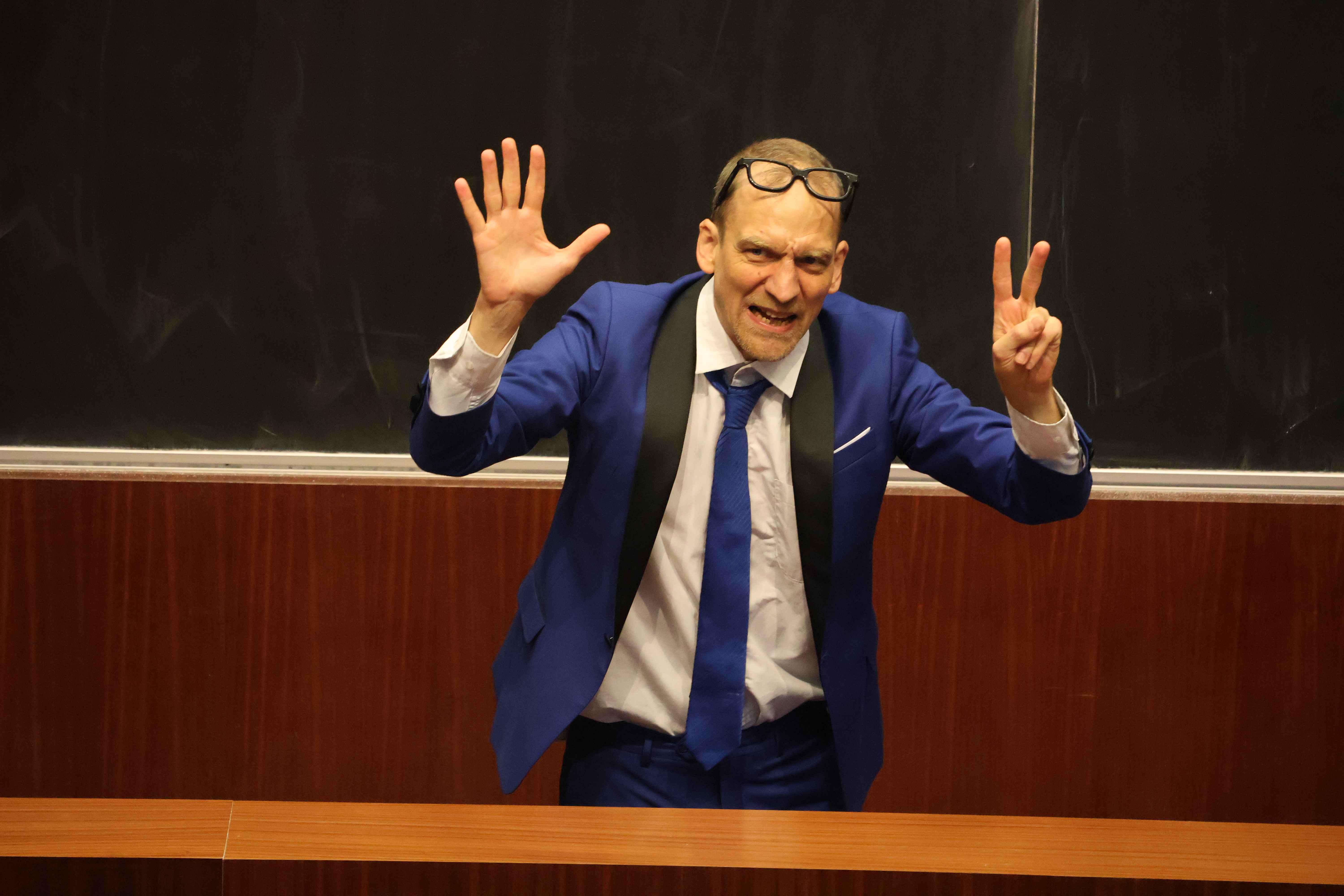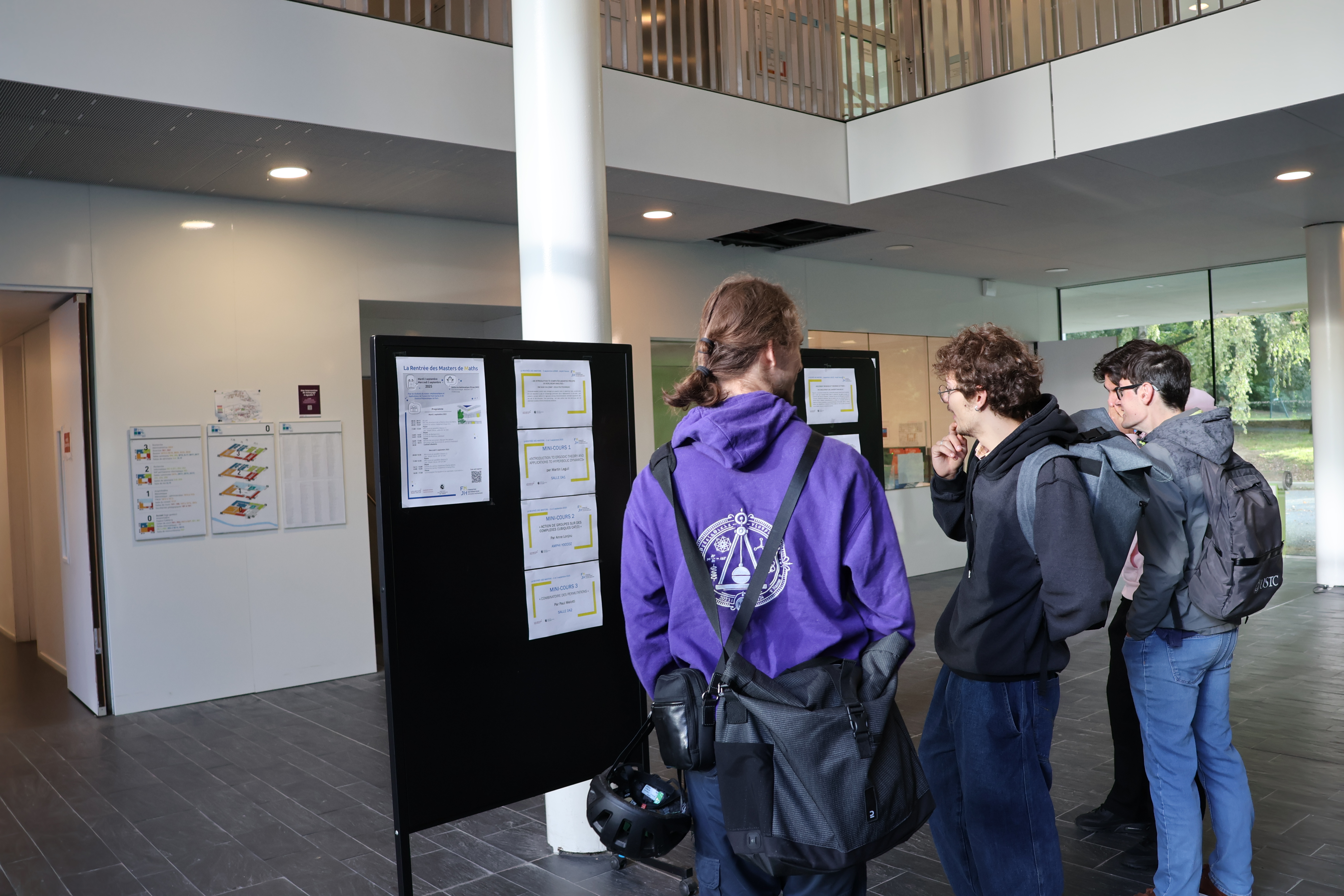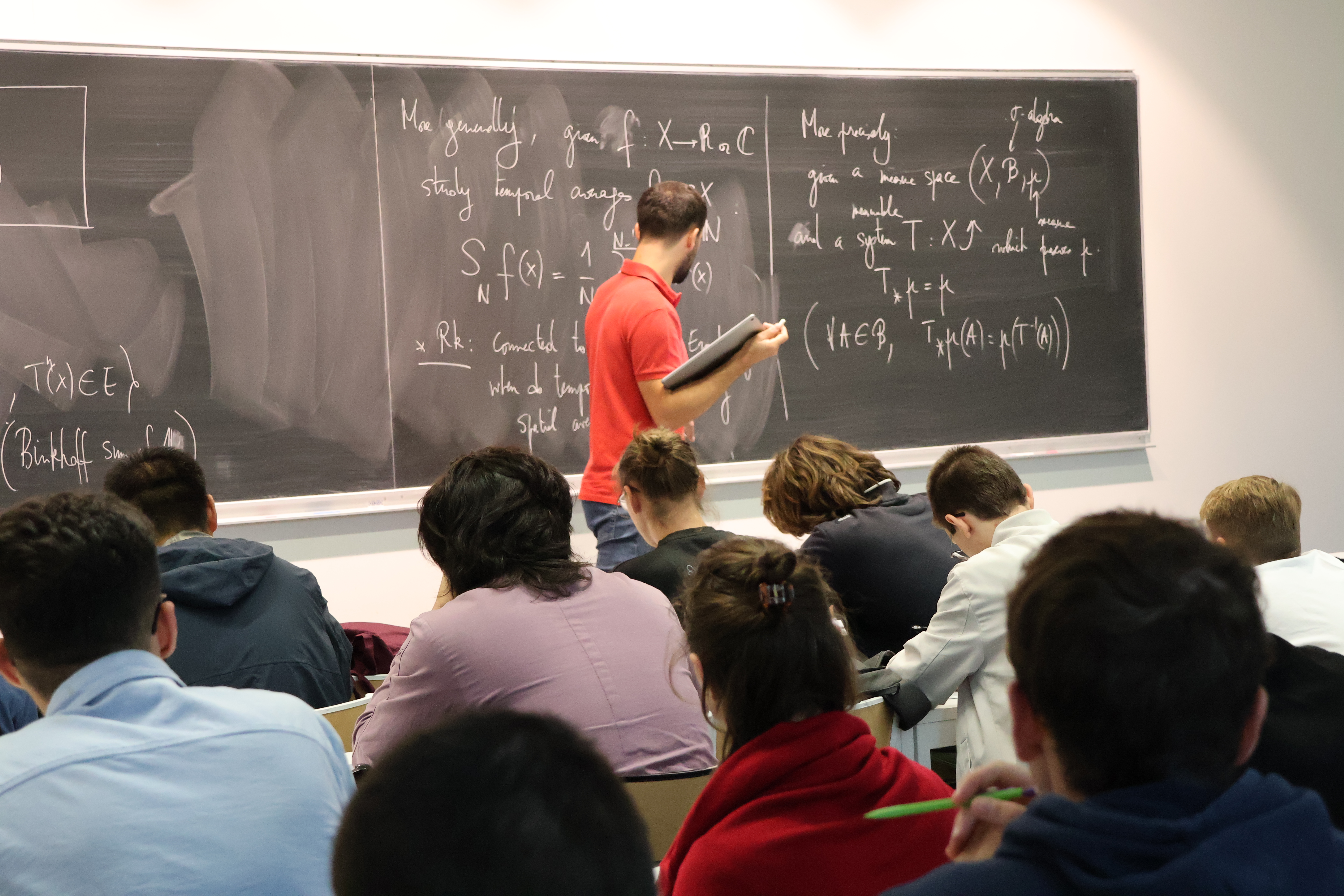Welcome days for the "Mathematics and Applications" Master's program
Every year, the FMJH organizes welcome days for all M1 and M2 courses in the "Mathematics and Applications" Master's program, co-accredited by the Université Paris-Saclay and the Institut Polytechnique de Paris. Organized with the support of the graduate school of mathematics at Université Paris-Saclay and the mathematics department of Institut Polytechnique de Paris, these days are a crossroads for students from all mathematical and geographical backgrounds, from all the establishments on the vast mosaic that is the Paris-Saclay Campus. The program is made up of mini-courses and opening lectures on a wide variety of mathematical research topics on themes that change from year to year. Interactive discussion sessions with PhD students and post-docs are also offered, to give young people a better understanding of what mathematical research is all about, right from the start of the Master's program.
These days are compulsory for students enrolled in the M1 and M2 Parcours Jacques Hadamard, as well as for FMJH scholarship holders. For other students of this master, priority will be given to M1.
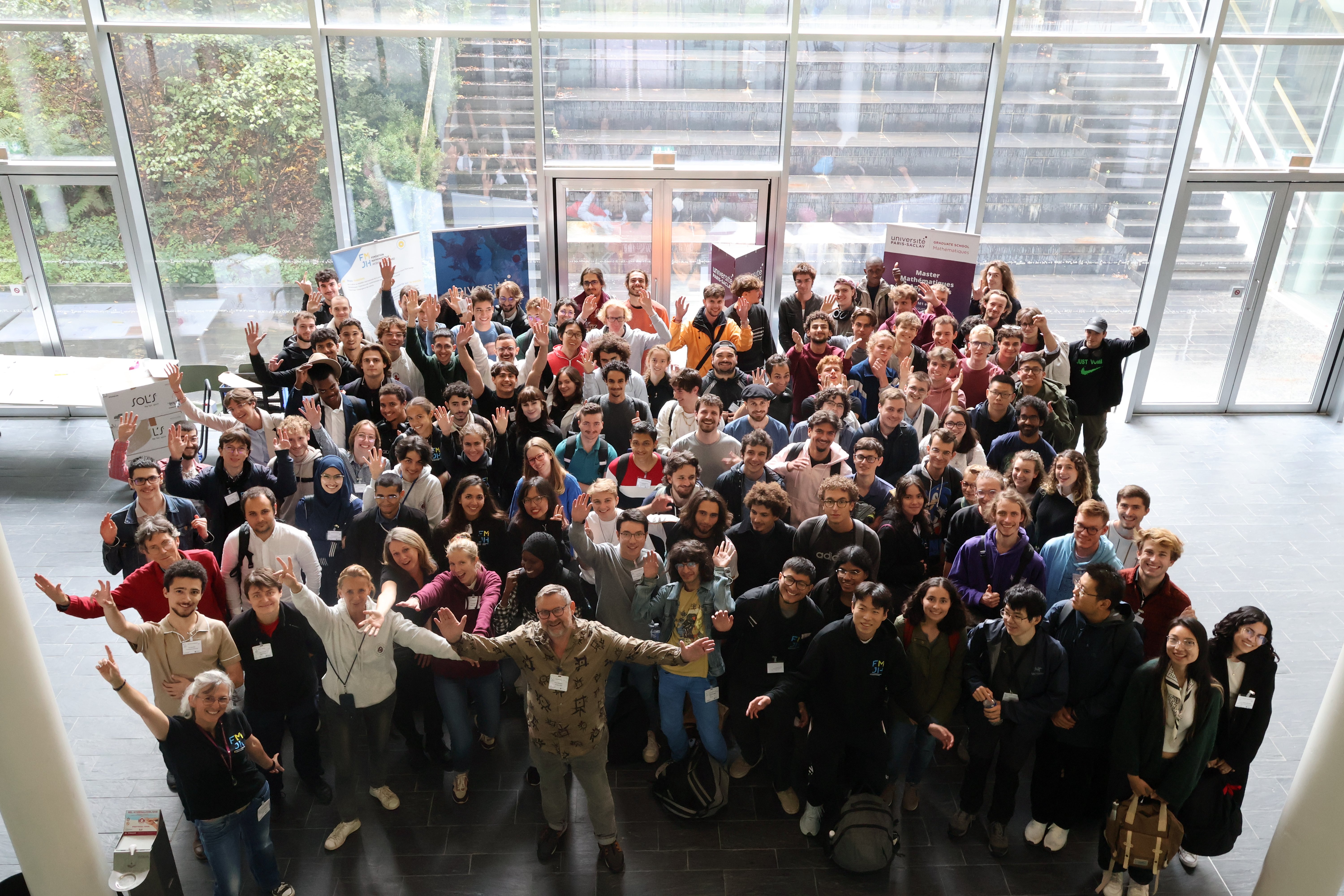
Master Starter 2025
The welcome days 2025 took place on Tuesday September 2 and Wednesday September 3 at the Institut de Mahématique d'Orsay.
Thank you to all the students, speakers, la Compagnie Terraquée, and the organizing team.
Mini-courses
- Martin Leguil (CMLS, Ecole Polytechnique) - "Introduction to Ergodic Theory and Applications to Hyperbolic Dynamics" - Room 0A1
Abstract: A central objective of Ergodic Theory is to characterize the statistical behavior of orbits within a dynamical system. For systems exhibiting hyperbolicity, dynamical foliations—specifically stable and unstable foliations—play a pivotal role in analyzing such statistical properties. In this minicourse, I will first review foundational results in ergodic theory, then introduce key concepts of hyperbolic dynamics, with a focus on stable/unstable foliations. Through examples, I will illustrate the significance of these geometric structures in studying ergodic properties, particularly their interaction with invariant measures of special interest, such as SRB measures. These measures describe the statistical behavior of a “large” set of points. In the context of conservative systems, stable/unstable foliations can be leveraged to establish properties like ergodicity; I will present Hopf’s classic argument in this regard. More broadly, for dissipative hyperbolic systems, “SRB measures are the invariant measures most compatible with volume when volume is not preserved” (L.-S. Young). I will discuss their construction and fundamental properties.
- Anne Lonjou (LMO, Université Paris-Saclay) - "Action de groupes sur des complexes cubiques CAT(0)" - Amphi Yoccoz
Abstract: La théorie géométrique des groupes est une branche des mathématiques qui étudie les groupes à travers leurs actions sur des espaces géométriques ayant de bonnes propriétés. Dans ce mini-cours, nous nous concentrerons sur les complexes cubiques CAT(0), généralisation naturelle des arbres et étudierons les isométries possibles de ces espaces. Nous verrons quels types de propriétés peuvent être déduites pour les groupes agissant avec de "bonnes propriétés'' sur de tels complexes.
- Paul Mellotti (LMO, Université Paris-Saclay) - "Combinatoire des permutations" - Room 0A2
Abstract: C'est un vieux domaine, qui occupe bon nombre de mathématicien·ne·s au moins depuis Euler : comment compter les permutations ayant un certain nombre de points fixes, d'inversions, de descentes... Ces questions ont accompagné le développement de la combinatoire et des séries génératrices. On verra un certain nombre de résultats, avec des jolies séries exactes, des méthodes bijectives et probabilistes. On prendra ensuite un point de vue moderne, avec l'étude des permutations aléatoires et leurs "limites d'échelles", le comportement asymptotique des zéros de fonctions célèbres. Elles permettront de faire des liens avec des problèmes de pavages, ou encore la géométrie de grands objets aléatoires.
Presentations
- Barbara Gris (Laboratoire Jacques-Louis Lions, Sorbonne Université) - "Diffeomorphometry in computational anatomy"
Abstract: Computational anatomy focuses on the quantitative analysis of medical shapes (e.g. images, surfaces or point clouds coming from medical imaging). The purposes can be to study a population (e.g. MRI scans of patients with a certain disease) or to compare two results (e.g. from the same patient but at two different times). A key step is in general to determine the corresponding areas between two shapes. I will present a framework of diffeomorphic shape matching allowing to build such correspondences.
- Matthieu Léautaud (LMO, Université Paris-Saclay) - "Vibrations propres, billards et ergodicité quantique"
Abstract: L'objectif de cet exposé est d'énoncer et d'illustrer le théorème d'ergodicité quantique après en avoir présenté les principaux protagonistes : les vibrations propres d'un domaine plan et la dynamique du billard associée.
Hadamard Lecturers presentations
- Hugo Chu (CMAP - Ecole Polytechnique) - "An introduction to computer-assisted proofs in Nonlinear Analysis"
Abstract: Computer-assisted proofs have emerged as powerful tools in resolving major conjectures and are expected to play an increasingly prominent role in Mathematics. In this talk, I will present a simple method for rigorously solving finite-dimensional nonlinear equations with the aid of the computer. Time permitting, I will also outline how this technique can be extended to tackle infinite-dimensional problems.
- Charlie Hérent (LMO, Université Paris-Saclay) - "Mouvement brownien et théorème de Pitman"
Abstract: Brownian motion is a physical phenomenon first observed in 1827 by botanist Robert Brown. While examining pollen grains suspended in water under a microscope, he noticed that they moved incessantly, chaotically and unpredictably. In this presentation, we will first focus on presenting the concept of Brownian motion mathematically through its history, definition and remarkable characteristics. Secondly, we will present Pitman's theorem from 1975, which is one of the best known theorems involving Brownian motion.
- Yicheng Zhou (LMO, Université Paris-Saclay) - "Hidden geometry and symmetry behind point counts"
Abstract: After introducing the point counting problem of polynomial equations with rational coefficients and their associated L-functions (following early works of E. Artin, F. K. Schmidt, H. Hasse, A. Weil…), I will explain through examples certain geometry and symmetry closely related to these point counts.
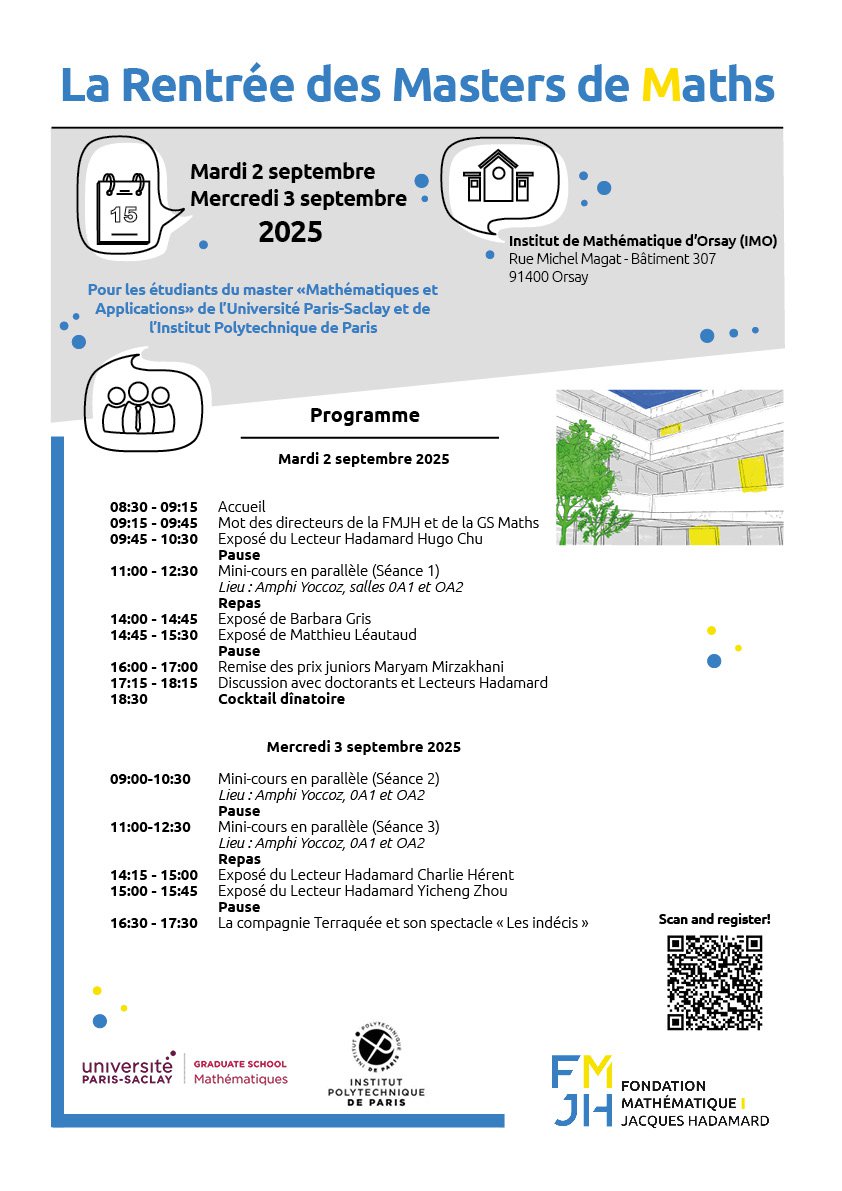
![]()
Photographs will be taken during the 2 days of the "Rentrée des masters 2025" event. Photos and videos taken during the event may be used and distributed as part of the FMJH's communication policy on its various media and communication channels. If you have any questions, please do not hesitate to contact us at the following address: communication@fondation-hadamard.fr.
Master starter archives


